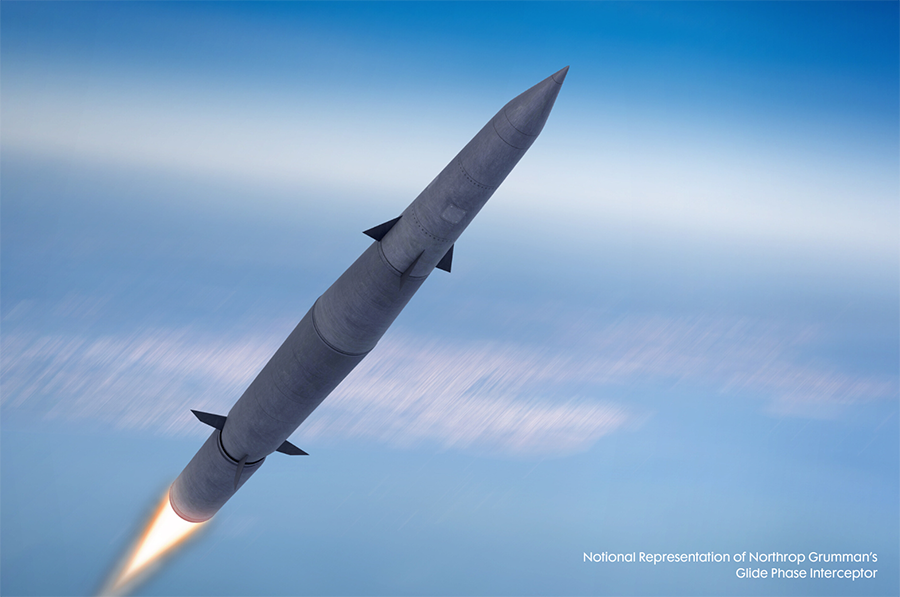While lawmakers are pressing the Pentagon to move faster in developing a new missile defense system for intercepting hypersonic weapons, the Missile Defense Agency should focus on developing more immediate, make-do solutions now and not rush to field the more advanced weapon, its director suggested June 6.
The in-development Glide Phase Interceptor “is a tip-to-tail designed system to counter the threats out of 2035, not today,” Air Force Lt. Gen. Heath A. Collins said during an event at the Center for Strategic and International Studies. Yet there is growing concern regarding China and Russia’s hypersonic capabilities—Russia has used hypersonic weapons in its war with Ukraine, and a 2023 Department of Defense report described China as having the world’s leading hypersonic weaponry. In response, Congress passed a provision late last year mandating that GPI reach initial operational capability by 2029.
MDA’s budget documents don’t project delivery of the interceptor to even start until 2035. And Collins, who previously served as the Air Force’s program executive officer for weapons, seems less interested in trying to hurry the program along than he does in finding another solution.
“It is an important program to get us where we need to, but it’s going to take some time,” Collins said. “But to bring that long-look capability to the hypersonic fight, we’ve been tasked to think creatively and bring capability sooner—2029, ’30. And that is really going to take maybe some different style of thinking than the traditional ‘start a new weapon.’ It’s most likely going to be a weapon that already exists today. What can we do to get the most out of it?”
The Pentagon fields a variety of interceptors already, from THAAD to Aegis to SM-6 to the Ground-Based Interceptor. Collins offered few hints on which, if any, could be used for hypersonic defense.
“We do need to sharpen our pencils,” he said. “I was the weapons buyer for the Air Force. There are other things that are being purchased by other agencies. Can any of those be brought to bear?”
Whatever MDA decides, it likely won’t be perfect or capable of matching every threat, Collins added. But it could be crucial given the pressing danger.
“Hypersonic weapons are being used today,” he warned. “And the inventories of our threats are increasing in the years to come.”
At the same time, Collins said he is not opposed to moving fast on GPI, so long as it remains “fundamentally viable.”
“I could claim that we’re going to do it in 2028 and skip all the testing, and then I would be a case study in acquisition school,” he said. “So I want to increase that as quickly as possible.”
The U.S. and Japan are collaborating on GPI, signing a formal agreement last month that will help lower costs for the Pentagon. Japan will lead development of rocket motors and propulsion components, with Breaking Defense reporting last week that the Ministry of Defense plans to award a contract by March 2025.
Collins also offered an update on MDA’s work to detect and track hypersonic launches through its Hypersonic and Ballistic Tracking Space Sensor prototyping program. In February, MDA and the Space Development Agency worked together to launch a batch of missile tracking satellites into low-Earth orbit, including MDA’s HBTSS and SDA’s Tracking Layer spacecraft, and Collins said MDA’s satellites are set to begin its hypersonic testbed calibration within a week.
The test will feature “both of those sensors tracking and in looking to see how they’re doing and how they could potentially close the fire control loop,” Collins explained.
Another calibration flight will follow later this year, he added.

